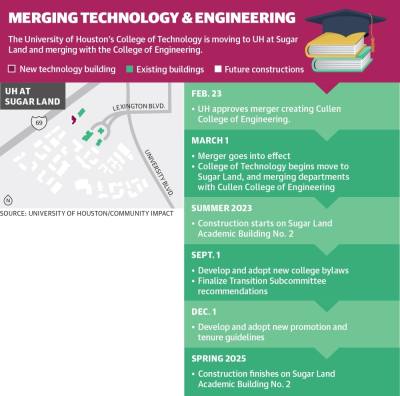UH President Renu Khator said in a Feb. 24 statement to members of the colleges of engineering and technology that the merger process started in March 2022 and was approved by the university this February in a bid to follow suit with top universities around the country.
“Most of the top 50 research universities offer their engineering and technology programs under one umbrella,” Khator said in the statement.
According to the statement, the four departments in the College of Technology—construction management, engineering technology, human development and consumer sciences, and information and logistics technology—will now be housed within the College of Engineering. The majority of classes and administration will move to the Sugar Land campus, but the technology departments will still serve the primary UH campus, UH at Sugar Land and UH at Katy as needed.
University officials said the merger will not impact tuition, and relationships between the College of Engineering as well as federal, state and regional research ties will “multiply as synergies across programs grow.”
“The merged Cullen College of Engineering will serve 11,000 students, making it the third-largest engineering/technology college in the state and one of the largest ones in the nation,” Khator said.
Alongside the merger, UH is also constructing a new $66 million technology building at the Sugar Land campus, Director of Media Relations Chris Stipes said. Of that figure, $52.4 million is sourced from the 2021 Capital Construction Assistance Project Funding approved by the Texas Legislature.
An additional $12.6 million comes from the UH system, and $1 million is “auxiliary funding,” according to documents presented to the UH board of regents in December.
The project, dubbed “Sugar Land Academic Building No. 2,” is projected to begin construction this summer and be completed in spring 2025.






